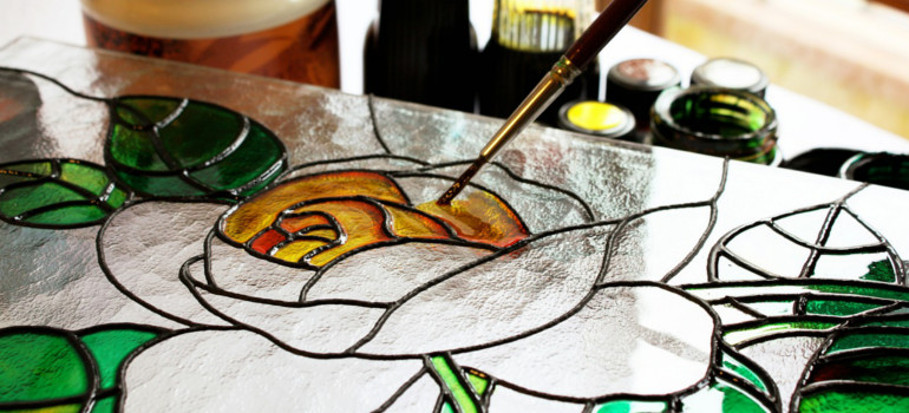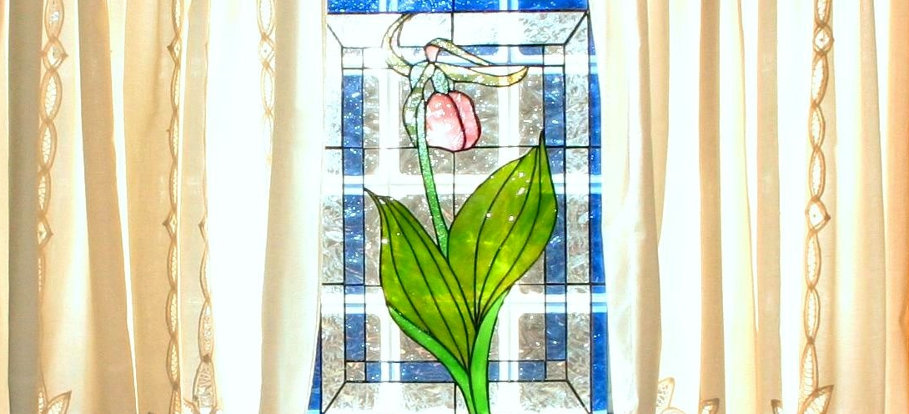
The making of stained glass requires artistic mastery. It’s been beautifying churches and rich folk homes for centuries. Today, there are many designer homes that include a few pieces of stained glass, decorating either windows, exotic glass figurines, and more.
Here, the Fantastic Services team is presenting you the interesting story of the past and future of stained glass windows.
- History of Stained Glass
- How To Clean Stained Glass Windows
- How Do Stained Glass Windows Work
- How to Make Stained Glass Windows at Home
If you:
- Want to know more about stained glass windows;
- Are looking for tips on how to clean them;
- Are interested in creating stained glass windows yourself,
Then this article is for you!
History of Stained Glass
Glass has been made as early as 5000 years ago, and stained glass existed since the 4th century. Once Gothic cathedrals appeared in the 12th century, the business of making stained glass flourished.
In 1843, William Jay Bolton placed the beginning of the stained glass era in the USA, with his business producing stained glass windows for churches. However, the American movement for stained glass making started truly blossoming at the end of the 19th century, when American glass makers travelled to Europe to get inspired by the medieval stained glass architectures.
Today, over 90% of stained glass production is used in city architecture for windows, lamps, decorative ornaments, and other beautiful figurines, which passionate collectors would adore.
Being an owner of a stained glass window makes it necessary for you to know how to care for it. The metal oxides used to create the colour effect are very sensitive to cleaning chemicals and some safety measures should be taken in advance.
How To Clean Stained Glass Windows

Here’s what you should do to clean your stained glass windows the proper way:
- Apply a cleaning solution that’s ammonia-free. Most of the household window cleaning solutions (like Windex) contain aggressive chemicals like Ammonium Hydroxide that might damage the coloured glass.
- Use soft cloth instead of paper towels to prevent any scratches. Avoid using newspaper as it contains ink and the chemicals inside that ink may produce unexpected results.
- Be gentle with pressure and try not to push too hard. The cames that hold the glass pieces together contain lead and that makes them easily pliable.
- Take special care at the edges and use soft wet Q-tip to gently clean up the surface deposits and dirt build-up.
- Wash it with a mix of warm water and a few drops of pH-neutral soap. Once the glass dries out to wipe it off delicately with a clean microfiber cloth for a stunning effect.
- Remove mould, if any, with the help of a stained glass friendly window cleaning solution that has 4 parts water and 1 part white vinegar. Bleach might be very effective in dealing with mould, but in this case, it may lead to irreversible discolouration of the glass. You can find some more window cleaning solution recipes in our extensive window cleaning guide.
In case you want to take a step further you can create your own stained glass. And here’s how you can do that.
How Do Stained Glass Windows Work
Stained glass is still made the same way it was done in the Middle Ages – a lump of molten glass is caught up at one end of a blowpipe, is blown into a cylinder, and is then cut, flattened, and cooled. Today, large manufacturers mix everything together in one container.
- Each ingredient is carefully measured according to a specific formula to get the appropriate colour, shape, and form. Glass is primarily made by fusing together sand, soda, and lead oxide. The colour is determined by adding another metal oxide.
- The molten glass mixture is then ladled into thick sheets. Once this is done, it’s coloured with a predetermined colour. Copper oxide can colour your end product in ruby, blue, or green hues, depending on the conditions. Cobalt can create all shades of blue. Chromium and Iron can also turn it green. Cadmium and titanium can make it gold or yellow.
- The glass is then packed into special pattern cases. The stained glass-making process is still mostly hand-crafted. After the design of the glass shape has been approved, the craftsperson measures the size and shape of the end product and makes a pattern. The pattern is then filled with glass.
- A full-sized black and white drawing is prepared. This is a careful, exact tracing of the lead lines on heavy paper. In other words, it’s a sketch on how the glass should be cut and will be later used as a guide when binding all pieces of glass together.
- The drawing is cut along the black lines with double-bladed scissors. The glassmakers elect the desired coloured glass and cut the shape of the pattern.
- The craftsman might paint the glass in order to bright out the most desired shades of colours. While doing that, the glass is held up against the light for better judgement.
- Long strips of grooved lead are placed along the inside of the laths. The piece of glass is fitted into the grooves and more lead strips are added until each piece of glass is inserted into the leads, according to the outline drawing.
- Last inspection. The finished products are once again held against natural light to inspect the level of glassiness and the play of colours when illuminated. If the desired result is there, it’s ready to be installed on a window frame.
The entire process is done by hand and can take between seven to ten weeks.
How to Make Stained Glass Windows at Home
To make stained glass, you would need not only an artistic vision but also the right tools and the right workspace. A glass worker’s studio needs to include enough natural sunlight, as well as a sturdy table, tools and, of course, a shelf supporting all glass creations.
- Gather your tools. The most important tool is the glass cutter. There are many varieties, so it’s your personal choice. For round cuts, you need a circle cutter. You will also need pliers, a grozing iron, brushes, and pattern shears.
- Cut the pieces of glass. Depending on the pattern you’d like to make, you can use all your tools to make a rough shape of your end product.
- Refine the edges. To make the cut edges smooth, use one or a few abrasive pieces of paper. Then, polish the edges with diamond sanding paper. Finally, brush the piece clean.
- Assemble your pieces like a puzzle. After you’ve cut all your forms and shapes, sanded and brushed all edges, it’s time to assemble all your pieces like a jigsaw puzzle. Use putty to keep the pieces from shifting.
- Install your window. Once your piece is done, it’s time to fit it on your window frame. A lot of people resolve to place crossed bars on the window frame to keep the glass from sagging.
Takeaways
- Stained glass has existed since the 4th century.
- The metal oxides used in the making of stained glass are very sensitive to chemicals, so you should take extra care during cleaning.
- Use ammonia-free cleaning solutions and soft cloths.
- Never use abrasive powders, metal tools, steel wool or scrubbing pads on stained glass windows.
- You need the right tools and preparations to make your own stained glass windows.
***
The making of stained glass has been a topic of interest to many of our Fantastic Services team members. Sometimes it’s a good idea to take a break from all the service guides and pay attention to something inspiring.